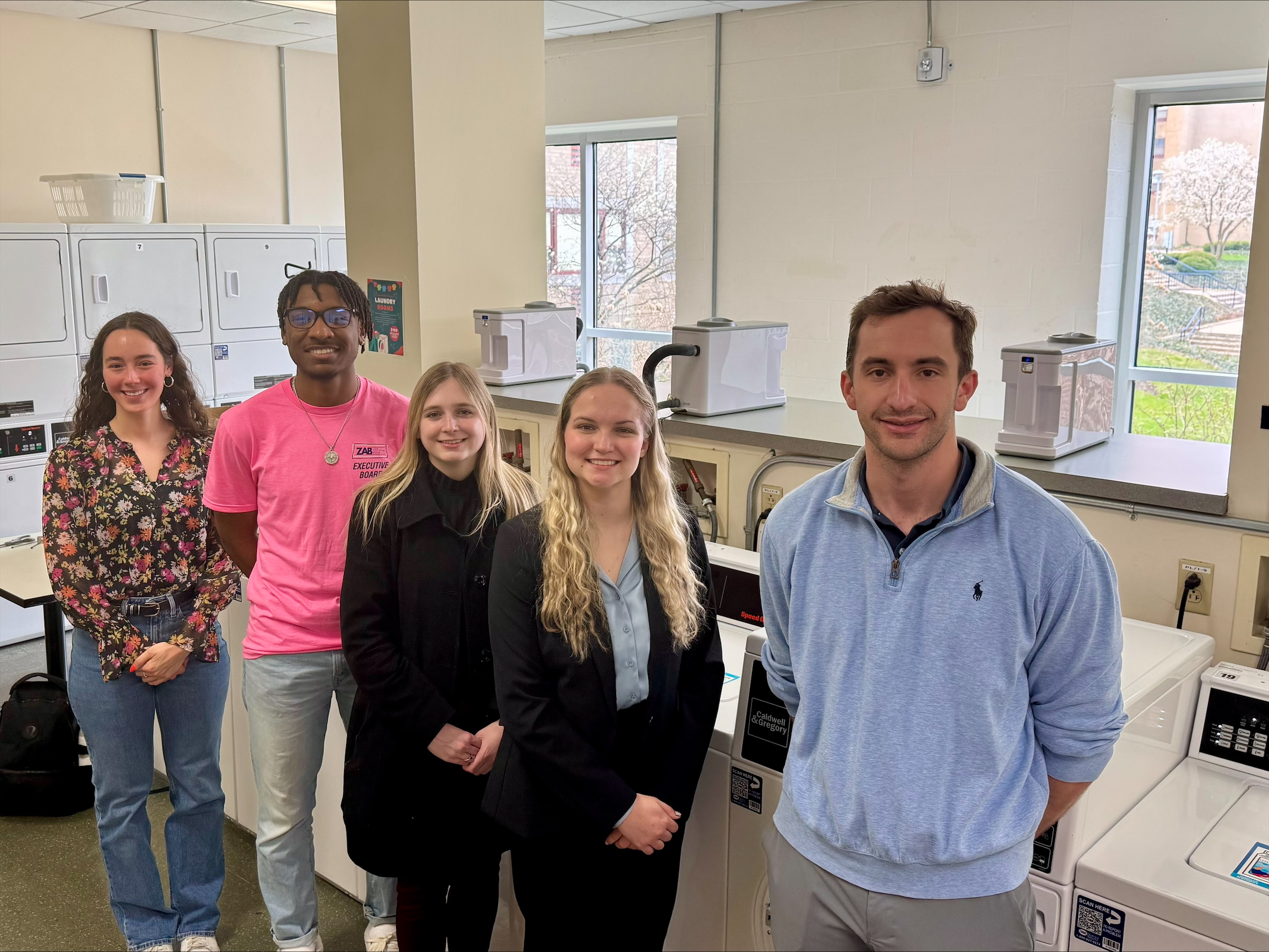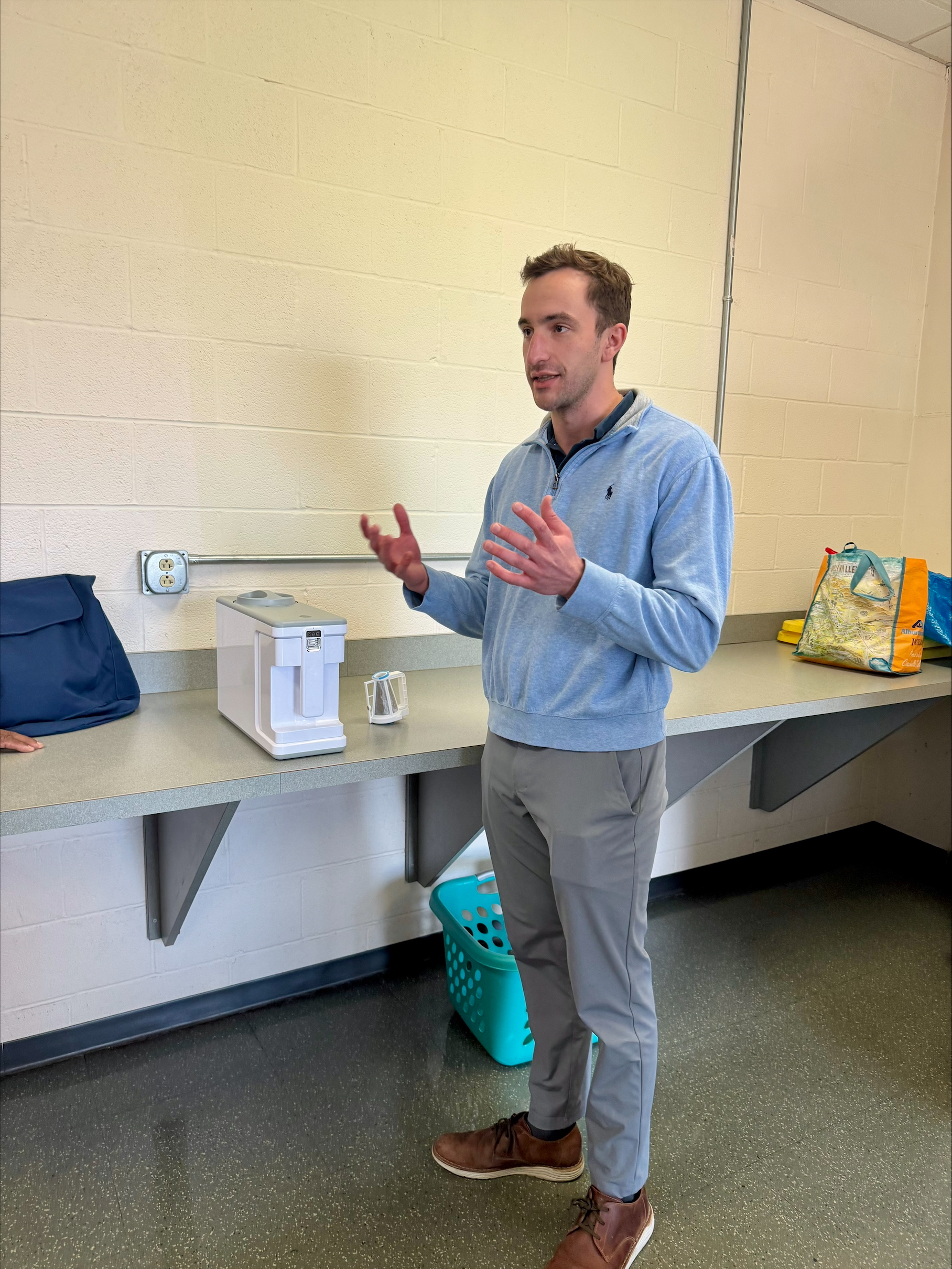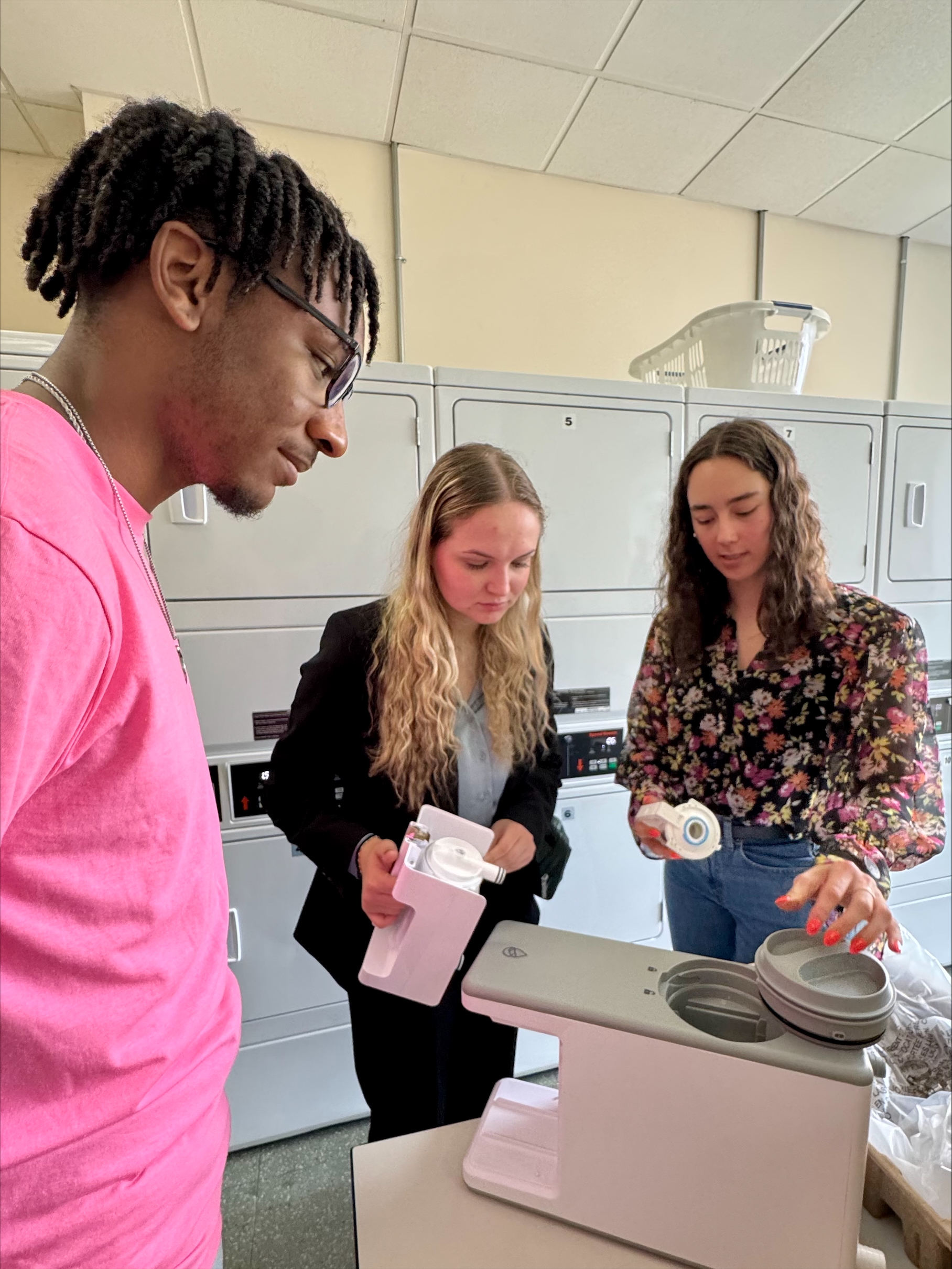Zips Earth Day targets preventing Lake Erie microplastic pollution
The University of Akron, the world’s leading research institution in polymer science and plastics engineering, has set its sights on a microscopic pollution problem in partnership with the Cleveland-based microplastic filtering technology company, CLEANR. As part of the program, CLEANR has installed its award-winning filtering devices on washing machines in the Williams Honor College for Earth Day.

The largest source of microplastic pollution is washing machine wastewater, accounting for 35% of all emissions. Microplastics — plastic particles smaller than 5 millimeters in diameter — are increasingly associated with major human health risks, including heart disease, digestive cancer and reproductive disorders.
“As a pioneer in plastic engineering and polymer science, UA is in a unique position to find ways to fight microplastic pollution and help create sustainable polymers,” said Ali Dhinojwala, W. Gerald Austen Endowed Chair and H.A. Morton Professor in the School of Polymer Science and Polymer Engineering. “That’s why opportunities to study and help develop innovations like CLEANR’s VORTX technology are so valuable to our research and solutions.”

CLEANR expects to collect a large amount of microplastics from UA wastewater. In a recent two-month deployment by CLEANR at nearby Case Western Reserve University, less than a half-dozen filters successfully were deployed to prevent almost 1,500 wash loads from releasing 2.4 billion microplastic fibers into the environment — the equivalent to 100 credit cards worth of plastic. Maintaining CLEANR for Washing Machines is nearly as simple as managing lint from a dryer.
"The biggest hurdle in fighting microplastics is awareness and a defined course of action,” said Max Pennington, CLEANR Co-Founder and CEO. “In the past 18 months alone, it’s become practically irrefutable that microplastics aren’t just an environmental issue, but a real human health threat. Between reports from The New England Journal of Medicine and Nature Medicineand alarming policy analyses by the California State Policy Evidence Consortium and the U.S.-Canada International Joint Commission, the main question is about the best course of action.

Microplastic concentration levels in Lake Erie are the second highest of the five Great Lakes. according to the Journal of Great Lakes Research. In January, the International Joint Commission reported that microplastic levels in fish from the Lakes are "among the highest reported worldwide."The Great Lakes hold one-fifth of the world's fresh surface water, and 40 million people rely on them for their drinking water. That makes this region a key battleground in fighting microplastic pollution.
CLEANR's unique VORTX filtration technology was nature-inspired by manta rays and basking sharks whose specialized gill structures allow them to glide through the water and feed passively without clogging their gills. Instead of forcing particles against a filtering surface like conventional filters, CLEANR’s technology creates vortices that suspend and isolate microplastic particles and efficiently channel them away to be captured and properly disposed of in the CLEANR Pod.
Media contact: Cristine Boyd; cboyd@uakron.edu; 330-972-6476
